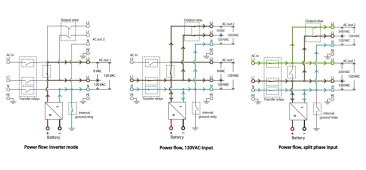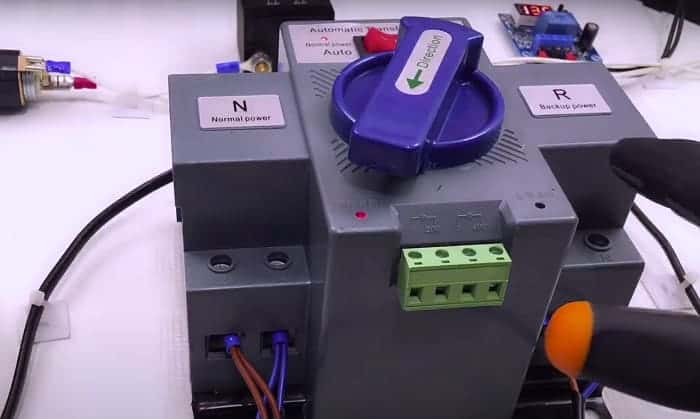Thank you so much for the comments everyone. It is hard to address them all individually now.
I really like the idea of the Multiplus II 2x120V in series for many reasons - but am concerned about the upfront cost (3-4x) and it has a 3x more idle draw when compared with the Phoenix (though, provides much more usable power, also an advantage). Also could not find one available to me in 48V. It seems the power draw is around 20-30W? Though the spec sheet lists only 11W (
https://www.victronenergy.com/upload/documents/Datasheet-MultiPlus-II-3kVA-2x120V-EN-.pdf). 2nd issue is that it indeed does not come in a 48V model, such a shame!
I'm open to trying to sell off the Growatt for a much better setup, but I'm not so sure what that setup would be, and for anything from Victron to come anywhere near the power of 12kW split-phase I would be spending a huge amount of money. 4 multiplus'?
I think the "best" solution here might be to have them both in power saver mode with a remote automatic transfer switch - or at least have the Growatt on in power saver mode and remotely turn on/off the Phoenix with a switch prioritizing the Phoenix. That way only one is connected at a time, I have the major power savings of the Phoenix for the majority of the usage, and can use the power of the Growatt whenever needed (without having to go to the shed). Re: wiring - I could do a "manual transfer switch" using the breakers and panel I already have, lowering the cost and making a future upgrade to an automatic transfer switch possible. I'm thinking, instead of the Growatt coming into the mains, it would come into a 2 pole breaker, and I could have the phoenix come into its own smaller 2 pole breaker (with a jumper cable to connect both legs to the same 120V input). The mains would then be the output to the house. To switch between them I just flip the breakers (only one being on at a time).
I'm running a huge 225ft 6/3 cable from the shed to the house, any sub panel idea in my understanding would involve another one of these $2k cables, no? I think that makes it feel a little prohibitive.
I'm still doing research and lots of thinking on this. I haven't found a suitable transfer switch and tbh I'm not sure what I'm looking for here with the 120V and split-phase coming in. Would a standard 240V transfer switch work? Looking at
https://www.victronenergy.com/transfer-switches/ve-transfer-switch or
Find the best automatic transfer switch for you here. I review the 12 models I used before and discover the best option.

www.galvinpower.org
. This switch looks like it'd work but if I understand correctly, I'd have to wait a pretty long time for the power to come after switching the Pheonix on? 30 seconds?!
https://www.amazon.com/dp/B00F4620OO
I like the low upfront cost of the Phoenix, $600 on Amazon but hate how it can't be expanded in the future. I think I might be better off with a Multiplus II, but the 2x120V model doesn't seem to be available, and not sure how I'd make the standard Multiplus II work well for this setup. I could expand in the future and maybe one day ditch the Growatt though. The growatt does its job but is kind of annoying (e.g. have never got the shine server stick to work, says its connected and online but have never seen any data!). I don't like having to buy a transfer switch with the Pheonix, a pretty decent added cost ($300-$400?) that could be better spent on a Multiplus II. But with only one input on the Multiplus II, I think I'm still looking at needing a transfer switch or doing things manually. It's a lot to consider.
Found this video:
, which is neat, would be cool to replace his Phoenix (an older model? this is not the same Pheonix Im looking at - which is
https://www.amazon.ca/gp/product/B076T5N9V8) with my Growatt in this setup - but this is all 120V AFAIK. Maybe if I had two Multiplus IIs, each taking one 120V leg of the Growatt...but then my idle is ~60W compared to ~10W of the Pheonix alone...and my upfront cost is probably closer to $5k than $1k.
@
l00semarble, I'm curious what you would have done different from the start. Very open to substantial improvements to this, even if it means eating the cost on the Growatt.
Of course I want to have this solved asap but jumping into another purchase that long-term won't work for me is not what I want to do. The small Phoenix 1200VA inverter solves my immediate issue at a low cost, but might not do me justice in the long-term especially with it not being expandable.




